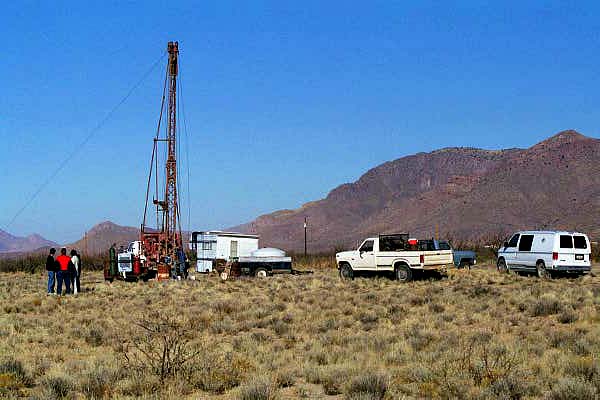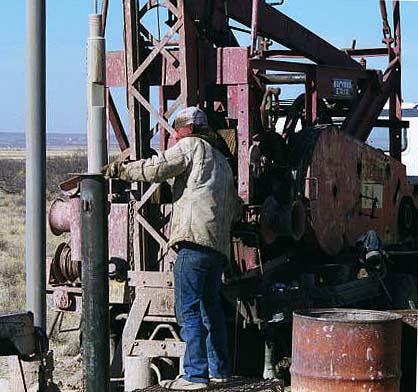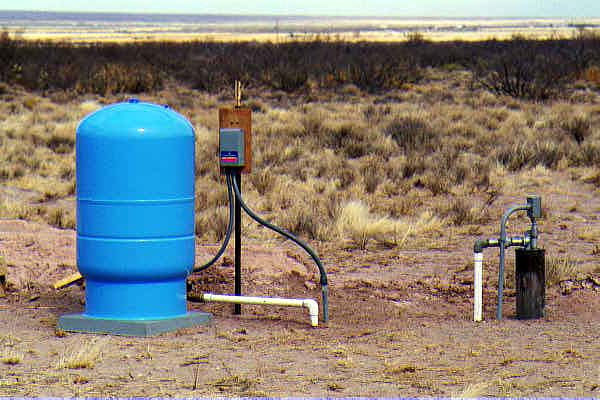
Step one is to drill a well; this one is offset just a couple of hundred feet from the middle of the 40-acre parcel of land. Once that's in, the electric company will run a power line to the well head (they want to wire up to something that will use electricity - imagine that).
To avoid the nastiness of overhead wires hanging in front of the telescopes, the electric and phone cables will run underground from the road (along the east side of the property) to the well.

The folks in this picture are asking each other "Are you sure he said he wanted a well way out HERE?". But, of course, I am sure, so drilling proceeded apace. After going down 320 feet, a suitable water supply was tapped, and the well is now completed.
The well pump needs electricity (and lots of it); in the center background you can see a power pole with a transformer. The next step is to get a line run to the well head; from there, it will branch off to the observatory building.

Note the rectangular cutout near the top of the cylindrical slug that's protruding from the well casing. The way the casing gets driven into the borehole is by placing a plate with a rectanglar slot on top of the casing, with the slot fitting into the cutout in the cylinder. The slug, which weighs about 3,000 pounds (over 1,350 kilograms) is then dropped. But the round part of the cylinder doesn't fit through the slot; only the cutout does. So the weight of the cylinder slams into the plate, which then presses the casing further into the borehole.
Now get this: the plate is not attached to the casing pipe - the driller
holds the plate on top of the casing by hand
(as in this photo) while the slug is
alternately lifted and dropped onto the plate.
The potential for injury is obvious, so
don't try this at home, folks.
This is definitely not a NASA Recommended Practice!

Some time later, the well pump gets placed into the casing near the bottom, almost 300' straight down, and wired for elecricity. The pump is run for a while, to pump out the mud and sand that have accumulated at the bottom due to drilling. This also allows an opportunity to measure the water capacity, which, for this well, turns out to be a continuous 20 gallons per minute (minimum). Even I don't use that much water when I shower!
The large blue tank contains a pressure bladder, to provide a reservoir of pressurized water so the well pump doesn't have to kick in every time a tap is turned on. This saves a great deal of wear and tear on the pump, which is, to say the least, somewhat inaccessible at the bottom of the well.
Next up: Electricity
The TRF Housing Tract Home Page
Terry R. Friedrichsen
terry@venus.sunquest.com